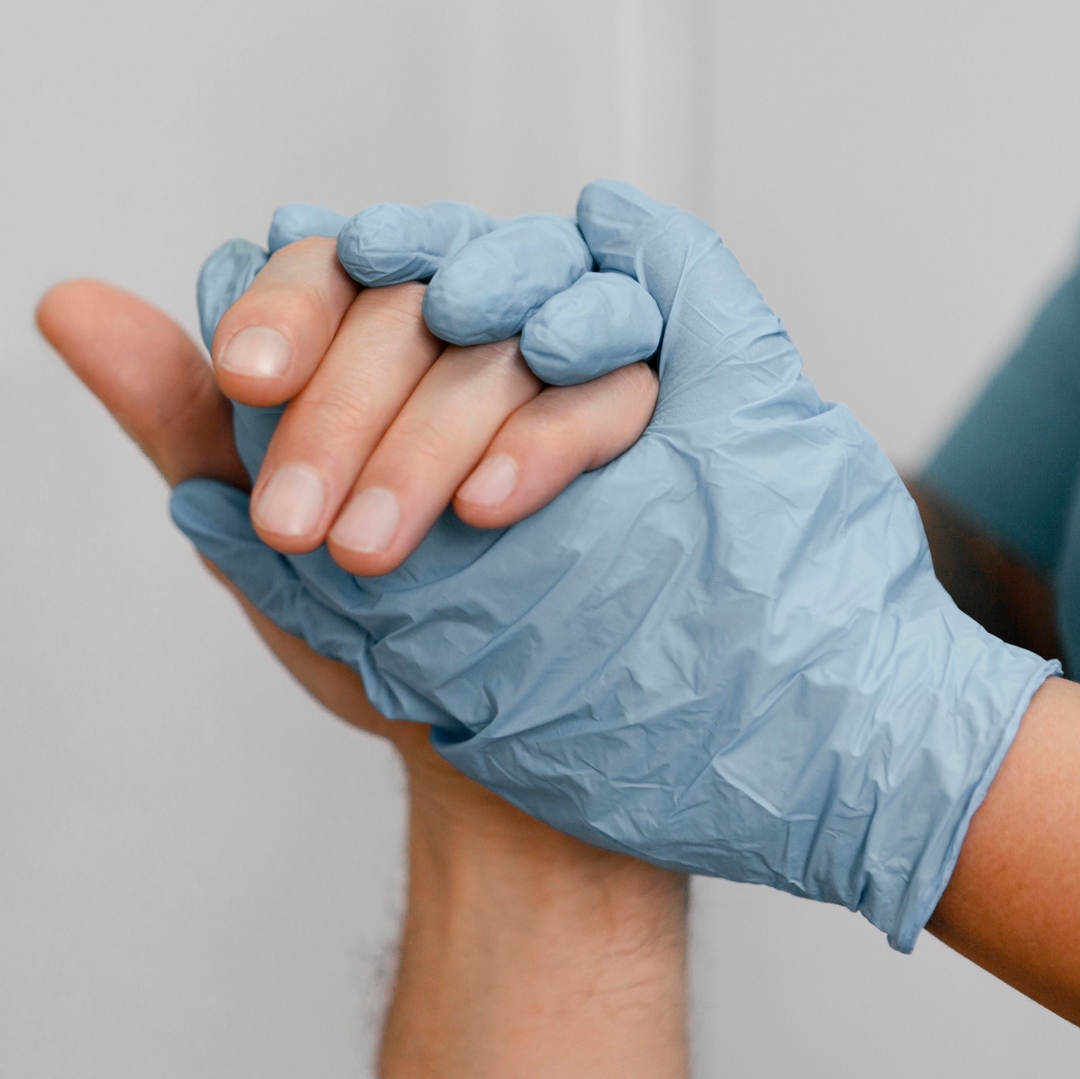
Joint Pains: Comprehensive Guide
By revati raman
Reviewed by : Jalaz Jain
May 16, 2023
Are your joints causing you some serious grief? Then this comprehensive guide is just right for you to know about joint pain, from causes and symptoms to treatment options available.
So, don’t worry and get ready to say goodbye to that pesky joint pain!
What is a joint?
A joint, also known as an articulation, is a point of contact between two or more bones. Every bone in the body, except the hyoid bone in the throat, meets at least one other bone at a joint.
Joint allows for movement and is essential for our daily activities. The shape of a joint is dependent on its function.
They are differentiated into three types based on their degree of movement: immovable, slightly movable, and freely movable. Additionally, joints can be classified based on their material structure, including fibrous, cartilage, and synovial.
The higher the possible movement in a joint, the higher the risk of injury.
What causes joint pain?
| Causes of Joint Pain | Common Joints Affected | Duration | Symptoms |
| Osteoarthritis | All joints, hands, hips, knees | Chronic | Worsening pain with movement |
| Rheumatoid arthritis | Hands, wrists, knees | Chronic, acute flares | Worsening pain at rest |
Joint pain can refer to discomfort, ache, or soreness in any joint. Various factors can trigger it, such as injury, disease, and age-related degeneration.
Arthritis is a common cause of joint pain, with symptoms including inflammation, stiffness, and decreased range of motion. Polyarthralgia is a condition characterized by pain in multiple joints.
As we age, it becomes more frequent due to the natural wear and tear on our joints from daily activities.
Some common causes of joint pain are:
As one ages, joint pain becomes more prevalent. In adults, arthritis is one of the major causes, with a prevalence rate of 22% to 39% of osteoarthritis.
Many possible causes of joint pain in adults affect more than one joint. Some of the common causes are:
Osteoarthritis
Osteoarthritis is a degenerative disease resulting from the cartilage’s wear and tear. It can affect all joints but is most common in the knee, hands, hip, and spine.
It progresses with age, and there is no cure, but the pain can be managed.
Rheumatoid Arthritis
It is an autoimmune inflammatory disease that causes inflammation, pain, and swelling in the joints. The pain can range from mild to severe and worsens on rest, especially in the morning.
If left untreated, it can become chronic and damage the tissue. It can also affect the lung, heart, and eyes over time.
Body Infection
Sometimes, a viral or flu infection can cause joint pain that affects five or more joints. This can cause swelling, redness, and loss of movement in the joints.
Psoriatic Arthritis
This is a type of arthritis that occurs in people with psoriasis, a skin condition characterized by red, scaly patches. It causes inflammation, pain, and swelling in the joints, ranging from mild to severe.
It can also affect the tendons and ligaments and can cause disability.
Reactive Arthritis
It is a joint inflammation that occurs as a reaction to an infection in another part of the body, usually the gut or bladder. It causes stiff, swollen joints and mild to severe pain and can inflame the tendons and ligaments.
Gout
It is one of the types of arthritis that results from the build-up of uric acid in the blood.
It causes severe pain and inflammation, and the big toe is mostly affected. However, it can also affect other joints.
Ankylosing Spondylitis
This is a lifelong arthritis that mainly affects the lower back and spine, but it can also affect other joints.
It causes the joints to join together and become one bone, and the exact causes are unknown, and there is no cure.
Connective Tissue Diseases
Various connective tissue diseases affect the body’s tissues and can cause pain and inflammation in the tendons and ligaments. Examples include systemic lupus erythematosus and scleroderma.
Vitamin-D Deficiency
A lack of vitamin D can also cause joint pain, which can become severe with age.
Menopause
Joint and muscle pain are common symptoms of menopause and can affect multiple joints. The most commonly affected joints are the elbow, knee, shoulder, neck, and hands.
Cause of joint pain in adults (affecting just one joint)
Joint pain is a common complaint, and various factors can cause it. In some cases, only one joint may be affected. Here are some possible causes of joint pain that affects only one joint:
Joint and Bone infection
Septic arthritis or osteomyelitis are bone infections that can cause joint pain and tenderness. Septic arthritis is a common but serious infection that occurs when bacteria enter the joint through the bloodstream.
Other infections: Lyme disease, caused by borrelia bacteria, can lead to joint swelling, most often in the knees.
Injury
Joint pain can be caused by dislocation, fracture or sprain. This type of injury is often due to accidents or sports.
It can affect various joint parts, including the cartilage, bone, ligament, tendon, and muscles. Joint pain caused by injury can be acute or chronic, depending on the severity of the injury.
Leukaemia
Joint and bone pain can be a symptom of leukaemia, cancer that begins in the bone marrow. Cancerous bone marrow cells enter the bloodstream and can cause pain in the affected joint.
Paget’s Disease of Bone
This condition impacts the structure of bones leading to joint pain, even without other symptoms. In Paget’s Disease, bone turnover is faster than normal, leading to new and abnormal bone formation.
Joint Pain Causes in Children and Teenagers
In children and teenagers, joint pain can be due to various reasons:
Juvenile idiopathic arthritis (JIA)
It is the type of arthritis that affects children under 16 and causes persistent joint inflammation, swollen and painful joints, and stiffness that worsens in the morning or at rest.
It can last for six weeks or longer and maybe a long-term condition that cannot be cured.
Sinding-Larsen Johansson disease
This knee condition affects teenagers and causes pain in the front of the knee, requiring monthly rest. The symptoms can persist for some time.
Osgood-Schlatter disease
The condition leads to swelling and pain just below the knee, common in sporty teenagers. The pain is acute and caused by repeated, excessive use of the quadriceps muscles.
This rare immune-mediated condition causes blood vessel inflammation, leading to joint pain, skin rash, and abdominal pain. While not usually serious, it can cause kidney damage.
Growing pains
It is a common condition that causes aches, mostly in the legs, but it is not serious and goes away in time.
The pain occurs in the evening or at night and is felt between joints, not in the joints themselves. The actual cause is unknown, affecting children aged 3-12 years.
Hip pain
Underlying conditions like septic arthritis can cause hip pain in children and teenagers, which can be a serious issue. Irritable hip is another cause of hip pain, lasting a few weeks.
Who is more likely to experience joint pain?
Joint pain can affect anyone, but some factors increase the likelihood of developing joint pain. Some factors that may make it likely to develop joint pain are:
If you are experiencing joint pain, it’s essential to consult a doctor to determine the underlying cause and receive appropriate treatment.
Check out this video to learn how to treat joint pain:
How is joint pain treated?
There are various ways to treat joint pain, from medications and therapies to at-home remedies. The severity of the condition determines the right treatment.
Medications
| Medication | Availability | Classification | Forms |
| Naproxen | OTC, Rx | NSAIDs | Tablets, Capsules |
| Ibuprofen | OTC, Rx | NSAIDs | Tablets, Capsules |
Various medications are available to provide relief from joint pain. Your doctor will examine your condition to provide the right one for you.
When are they used?
Medications for joint pain are typically used to reduce inflammation, manage pain, and improve joint mobility. They can be used for short-term or long-term use, depending on the underlying cause of the joint pain.
Always follow your doctor’s instructions to avoid any complications
How they work
Certain medications for joint pain work by blocking the release of cyclooxygenase (COX) 1 and 2, leading to inflammation, swelling, and pain.
The medications travel to the stomach. It is then absorbed into the bloodstream and reaches the site of pain where it shows its effect.
Types of medications
Topical Agents
Topical agents can be applied directly on the skin of the affected joint to relieve the pain. It can be in the form of cream, sprays, ointments or patches.
When are they used?
Topical analgesic drugs can effectively relieve acute to chronic joint pain. It’s best used for hand and knee joint pain.
Moreover, when combined with oral medications, they help ease pain faster.
How they work
The spray, ointment, or cream is directly applied to the skin in this treatment option. The skin absorbs the active ingredients available in them.
It penetrates through the vein and reaches the joint to help relieve the pain.
Types
Check out the list of effective topical agents used for joint pain:
Consult your healthcare provider before using topical agents for joint pain especially if you have any pre-existing medical conditions or are taking other medications.
Injections
Injections can help provide immediate and effective results. They are an incredible alternative option for over-the-counter oral medications.
When are they used?
People of all ages can be administered the injections for joint pain. They help to manage pain and treat swollen or inflamed joints.
How they work
In this treatment method, the medication is directly injected into the affected area, relieving pain much quicker.
The injections can be administered in three ways:
A doctor or a trained healthcare professional should give the injections.
Types
There are various types of injections available to treat joint pain. Some of these are:
Physical Therapy
| Physical Therapy | Medication | |
| Targets root cause | ✓ | x |
| Reduces inflammation | ✓ | ✓ |
| Results in long-term relief | ✓ | x |
| Improves physical health | ✓ | x |
Physical therapy, along with medications, is an effective option for joint pain. It can aid in symptom management, enhance physical function, and increase mobility.
When used?
Physical therapy is commonly used for joint pain caused by arthritis, tendinitis, and bursitis. It is also recommended after joint replacement surgery to aid in the recovery process.
A physical therapist can help alleviate joint pain by designing exercise programs that improve range of motion, flexibility, and strength.
How it works
A combination of stretching exercises helps to smoothen joint movement and relieve pain. Hence it helps to increase the movement and bending of joints.
Types
Some types of physical therapy are:
Physical Therapy vs Medications
It’s important to note that both physical therapy and medication can play important roles in managing joint pain. The best approach will depend on the individual’s unique situation.
A healthcare professional can help determine the most appropriate treatment plan.
Home Care
Following below-mentioned mentioned home care tips below can help manage joint pains.
Home care tips can help manage joint pain, but it’s important to consult a healthcare professional for a comprehensive treatment plan.
Alternative Treatments
Apart from medical and physical therapies, various alternative treatment options are available to treat joint pain. Some of the types of alternative treatment options for joint pain are:
Check out this video to learn how to do yoga to relieve joint pain:
How is joint pain diagnosed?
When a patient presents with joint pain, the healthcare provider usually thoroughly evaluates the underlying cause. Here are some of the diagnostic methods that are commonly used:
Other diagnostic methods may also be used, depending on the suspected cause of joint pain. It is important to have a proper diagnosis to determine the best treatment and management plan for joint pain.
What symptoms of joint pain are causes for concern?
Joint pain can be a distressing experience and can come with several symptoms. Here are some of the common symptoms associated with joint pain:
It is important to note that joint pain symptoms can vary depending on the underlying cause. If you experience joint pain, seeing a healthcare provider to determine the cause and appropriate treatment is advisable.
When should I see a doctor?
It is common to experience joint pain occasionally, especially as we age. In most cases, it can be managed with self-care, such as rest, ice, or over-the-counter pain relievers. However, there are situations where it is important to seek medical attention.
Joint pain lasting more than a few days can be a sign of an underlying condition, and seeing a doctor can help you identify the cause of the pain and get appropriate treatment.
Additionally, if the pain interferes with your daily activities or affects your overall health, it is important to seek medical attention. It is also crucial to see a doctor if the cause is not identifiable or if the pain returns after a period of relief.
If you have a concerning medical condition or have experienced joint pain in past, consult your doctor to rule out any severe medical conditions.
In general, it is always better to err on the side of caution regarding joint pain. Consulting a doctor on time can help prevent the condition from worsening and lead to a faster and more effective treatment plan.
What is the outlook for people with joint pain?
The outlook for people with joint pain varies depending on the underlying cause. In some cases, such as acute injuries, joint pain can be treated effectively, and the person can recover fully.
However, for chronic conditions like arthritis, joint pain may be a lifelong challenge that requires ongoing management.
While joint pain can be managed with medications, physical therapy, and lifestyle changes, it is important to note that it can impact a person’s quality of life. It may limit their ability to engage in certain activities.
People with joint pain can still lead full and active lives with proper care and management. Your healthcare provider will help to develop a personalized treatment plan to address your unique need.
Conclusion
In conclusion, joint pain is a common condition affecting people of all ages and significantly impacting their daily lives. By understanding the causes and symptoms, one can look for treatment options to help individuals manage joint pain and prevent further damage.
Regular exercise, maintaining a healthy weight, and seeking medical attention when needed are important factors in managing joint pain. While joint pain can be a challenging condition to live with, with the right care and attention, individuals can improve their quality of life.
Loading...












